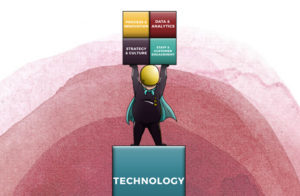
In his book, “Good Strategy/Bad Strategy” Richard Rumelt says that the most basic idea of strategy is the application of strength against weakness. He emphasises that having a coherent strategy – one that coordinates policies and actions – is a huge, incredibly important natural source of strength.
Rumelt states “a good strategy just doesn’t draw on existing strength; it creates strength through the coherence of its design.”
The fact is that most organisations are not good at this – they agree a strategy without any clear coordinated plan of implementation – exactly how they expect the vision to be realised.
So often, it is a competition of who can come up with the most fancy and shiniest aspiration! One which will impress their peers, board or public body, and an actual coherent plan of action comes second.
James Kerr, in his book “Legacy – What the All blacks can Teach Us About the Business of Life” he discusses the point that few companies really interrogate the connection which exists between strategy and structure – the overall vision and the actions that take place over a working week. However, with the transparency, data and human connectivity made available through technology, we have many more opportunities to do this.
The real answer to this conundrum is to operate within a Digital Transformation Framework – one that coordinates actions to the overall strategy and maximises the opportunities of the digital age. Becoming digitally mature is much more about being able coordinate the internal operations of an organisation than front facing online activity. (We have developed a Digital Gap Analysis, which provides an insight into how digitally mature or ready organisations are – give it a go!)
When embarking upon a Digital Transformation journey, the success or failure of the process depends on the use of a framework. We have Digital Transformation Framework you can read more about, and as it should, it begins with your strategy.
Culture, alignment, innovation, communication can only seek to work if the strategy is well developed, clearly defined and expertly communicated. Technology is the “golden thread” that supports the delivery of the strategy and the overall organisation’s Digital Transformation.
Richard Rumelt describes the development of good strategy as ‘’discovering power’’. The new digital age has given organisations opportunities that were not available 3-5 years ago. Digital abilities are doubling each year. The real power, however, comes from using these abilities within a Digital Transformation Framework – and I’ll say it again, all good Digital Transformation journeys starts with strategy.
For more information on starting your Digital Transformation project, using our Digital Transformation Framework or to take our Digital Gap Analysis to get insight into how ready for the digital age your organisation is, follow the links and get in touch if you have any questions.


